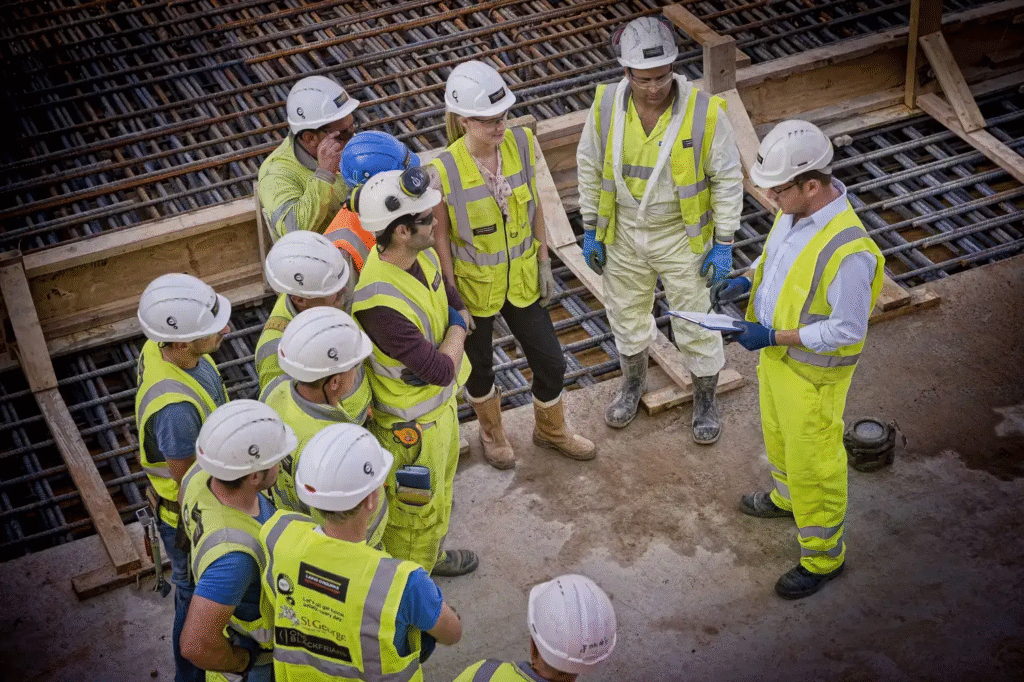Estimating labor costs in construction projects often feels like you are entangled in a tight deadline. If you get it wrong, you will face budget overruns that cut profits or delays that make clients frustrated. This guide breaks down the process into simpler parts to help contractors and project managers face this challenge early. We will discuss what increases these costs, how to figure them accurately, and why precision matters. No matter, you’re handling a small home renovation or a large commercial project, understanding labor estimating keeps your work profitable and on track. Think about those times when unexpected crew needs or wage hikes threw your budget off. Here’s how to avoid that headache.
Factors Affecting Labor Costs
Labor costs don’t happen in isolation. Several elements shape them, making each project unique. Recognizing these helps you spot expenses better and adjust your bids competitively.

- Location:
Wages vary by region. In urban areas like New York or San Francisco, skilled workers offer higher rates due to the living costs. Rural sites may offer lower rates, but skilled shortages lead to expenses for hiring experts. For instance, local regulations or union requirements in certain states can add 10-20% to baseline wages. - Skill Level:
Shortage of skilled labor is another major factor. Electricians or plumbers with skill certification, cost more than general laborers. Projects that require specialized skills, like welding for structural work, lead to high rates. Industry data shows that skilled trades can charge $50-100 per hour, while unskilled ones may charge $20-40. - Project Size and Complexity:
Larger jobs often benefit from economies of scale, but complex ones with tight timelines increase overtime needs. A high-rise building requires more coordination, raising supervisory costs. Smaller projects might seem simpler, yet they can have proportionally higher setup times, compromising efficiency. - Season and Weather:
Construction peaks in warmer months, driving up demand and rates. Bad weather delays work, forcing overtime. In colder climates, winter projects might need heated enclosures, adding indirect labor burdens. - Market Conditions:
Economic shifts play a big role. During booms, labor shortages inflate wages, as seen in recent years, where shortages increase costs by 5-10% annually. Supply chain issues indirectly affect labor by causing downtime. - Regulations and Benefits:
Taxes, insurance, and benefits increase direct wages at a high rate. Prevailing wage laws on public projects mandate minimums, boosting costs by 15-30%.
Addressing these early prevents surprises. Contractors often overlook how site conditions like difficult access can slow productivity, doubling estimated hours for tasks.

How to Estimate Labor Hours and Costs
Getting a solid estimate starts with a clear method. Break it down to avoid guessing numbers and build confidence in your numbers.
Define the Scope
First, define the scope. List every task from site prep to finishing. Use plans and specs to quantify work, like square footage for framing or linear feet for piping.
Estimate Hours per Task
Next, estimate hours per task. Draw from historical data, if past jobs show framing a wall takes 2 hours per 100 square feet, apply that. Tools like unit pricing from RSMeans provide benchmarks, adjusting for your region’s rates.
Include Overheads
Calculate rates. Include base wages and overheads, that is, taxes at 7-10% benefits around 20-30% and overhead like tools or training. For a $30 hourly wage, the burdened rate might hit $45-60. Multiply hours by rates for each task and then add them. Add contingencies, by 10-15% for unknowns like delays.
Team Formation
Consider crew composition. A team of three might complete roofing faster than two, reducing total hours. Software calculators simplify the inputting of variables for quick outputs. For example, on a residential remodel, estimating labor for kitchen installation may take up to 40 hours at $50 rate which equals $2000. Factor in supervision at 10% more. Refine with site visits and team input. This approach ensures your bid covers costs without padding too much, losing you the job.
Accurate methods for estimating labor hours in residential construction often lead here because precision turns potential losses into wins.

Changes in Labor Costs Can Affect the Overall Budget
Labor usually accounts for 20-40% of project budgets, so price changes hit hard. A 10% wage increase midway can add thousands to the derailing timelines. Rising costs from shortages force overtime or subcontracting at premium rates. Delays compound this as idle crews still get paid. Inflation exacerbates it. Recent trends show 4-6% annual hikes in labor.
On the other hand, efficiencies like better tools can lower costs, freeing funds for materials. If you underestimate these changes, it leads to cost overruns which cut profits. For a $500000 project, a 5% labor spike means $12500-25000 extra, often absorbed by the contractor. Watch the market closely and write contracts that can adjust. Use escalation clauses to handle price changes fairly.
This protects against surprises, keeping stakeholders happy. Unexpected hikes have sunk bids. Plan for them to stay competitive.

The Importance of Accurate Labor Cost Estimates in Keeping the Project on Budget
Accurate estimates are the essentials of successful projects. They set realistic budgets, preventing shortfalls that delay work or cash flow. Overestimating causes bids to lose while underestimating cuts profits. Precision gives profit. Studies show that carefully estimated projects finish 15-20% under budget.
It aids planning, allocating resources efficiently. Clients trust reliable figures who build long-term relationships. In competitive fields like commercial, building sharp estimates wins more work. Mistakes lead to conflicts or rework, which increases your budget. Tools and data-driven methods reduce risks, ensuring smooth execution.
Conclusion:
Mastering labor cost estimates turns a major headache into your strongest advantage on every job. You now understand how location skill levels, project size, and market shifts influence the numbers, and you have clear steps to calculate hourly rates and contingencies that withstand pressure. These methods prevent overruns, profits grow, and clients return. The next bid you submit can be the one that finally runs smoothly from start to finish. Don’t wait for the next budget crisis. Put this guide to work on your current project today.
Looking for expert labor cost estimating. Reach out to ALM Estimating for expert guidance on your construction labor estimating and secure precise calculations that protect your profits. Get your free quote now!
FAQs:
Q1. What are the main components of labor costs in construction?
Labor costs aren’t just the paycheck. They include base wages, benefits (health insurance, retirement), payroll taxes (Social Security, unemployment), workers’ comp and liability insurance, and overhead like safety training, tools, or equipment maintenance. Add it all up, and you get the fully burdened labor rate, the true cost of one worker for one hour.
Q2. How does location impact estimating labor costs?
A carpenter in downtown Manhattan earns more than one in rural Kansas, higher wages from demand and cost of living. Urban jobs might add union rules or traffic delays, while remote sites could mean travel pay, lodging, or skill shortages that force you to fly in for help. Adjust your estimates 10–30% depending on where the job sits.
Q3. Why use historical data for labor hour estimates?
Because yesterday’s job tells you how long framing a wall actually took, not how long you hope it takes. Historical data gives real productivity rates (e.g., 2.5 hours per door install), cuts guesswork, and makes your bid believable. It’s proof, not a prayer.
Q4. What tools help with construction labor cost calculation?
Use BuildBook, Procore, or PlanGrid, plug in crew size, hours, and rates, and they spit out totals fast. For benchmarks, RSMeans or Craftsman Costbooks give regional labor rates and productivity standards. Spreadsheets work too, but software keeps you from fat-finger errors.
Q5. How do skill levels affect labor budgets?
A general laborer might cost $20–$40/hour. An electrician or plumber? $50–$100+. The more skilled the trade, the higher the rate, and the fewer people can do it. One specialty crew can eat half your labor budget, so plan crew mix carefully.
Q6. Can weather changes alter labor cost estimates?
Absolutely. Rain shuts down concrete pours. Cold slows masonry. Delays = idle crews = pay for standing around. Add overtime to catch up, and costs jump 5–15%. Smart estimators build weather contingencies or schedule buffers, especially in winter or monsoon zones.
Q7. What is a burdened labor rate?
It’s the real hourly cost of a worker. Take a $30/hour wage, add 50–100% for benefits, taxes, insurance, and overhead, and you’re at $45–$60/hour. That’s your burden rate. Bid with base pay only, and you’ll lose money fast.
Q8. How do market conditions influence labor estimating?
In a boom, everyone’s busy wages spike, subs are booked, and you pay premiums for overtime or travel. In a downturn, rates soften, and good crews become available. Check local job boards, union halls, and supplier chatter weekly. Market awareness = bid accuracy.
Q9. Why add contingencies to labor estimates?
Because life happens. Change orders, delays, scope creep, or a sick foreman can blow your plan. A 10–15% labor contingency acts like insurance, it keeps you from eating losses when the unexpected hits. Clients respect realism over wishful thinking.
Q10. How can accurate estimates improve project outcomes?
They stop bleeding cash on overruns, protect your profit, and let you sleep at night. Accurate bids win trust, clients return, subs respect you, and banks fund you faster. Over time, precision builds your reputation and your bottom line.
